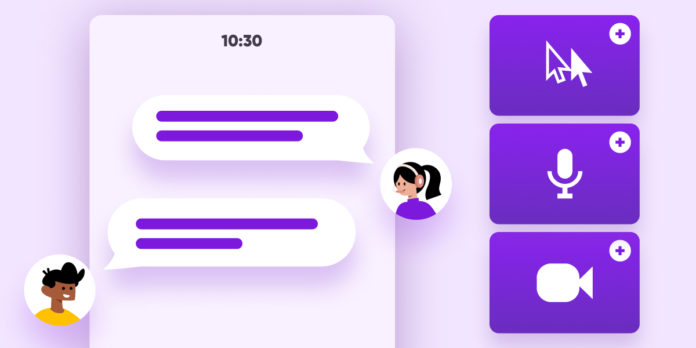Are You Offering a Seamless Customer Experience?
It seems we’ve all become digital natives, starting our customer journey online seeking information and answers online. We have become accustomed to turning to our PCs and smartphones to access answers and connect with others. In response, businesses enhanced their websites and apps by adding web chat to provide some degree of online customer service. However, the process of getting to a mutual understanding of an issue can be an extended back and forth exchange that all too often ends with a push to an offline channel, like a corporate phone number, if our inquiry gets too complex. It’s clumsy, lacks context and is not exactly customer-friendly, begging the question: Is your customer journey fragmented or seamless? And are you truly meeting customers where they are—OnScreen—and servicing them in the manner of their choosing?
True Digital Customer Service (DCS) means meeting customers where they are, in the channel that works best for them. In today’s digital-first world chat is no longer enough to deliver seamless customer service. Today’s tech-savvy customers expect more from the companies that they choose to do business with.
DCS: Going Beyond Chat
Companies should rethink chat as the primary channel in the bigger Digital Customer Service strategy and consider ways to build on web chat to add more context for seamless customer experiences. How can customers move from chat to OnScreen voice and video with little effort? Can organizations offer a continuous customer experience rather than breaking the digital connection?
In today’s highly competitive market, and with consumers increasingly demanding digital-first interactions, it’s not enough to merely add standalone chat and call it a day. Here are 5 reasons why:
- Chat is no longer a differentiator. For businesses that offer online sales and servicing, chat has become table stakes. But not all chat is created equally; how it integrates into the contact center and other communication touchpoints is an important key to success.
- Chat has its limits. Web chat can be a great engagement channel for simple inquiries like updating a password or checking an account balance. But some interactions—like choosing the right loan type or identifying fraudulent credit card activity—sometimes benefit from escalating to a voice conversation instead of a long back and forth when things get more complex. (Make it OnScreen Voice!)
- Chat lacks valuable context. The simple back-and-forth of a chat conversation can be frustrating for both the customer and the customer service representative. Offering tools like CoBrowsing and screen sharing can improve the experience and decrease interaction times—leaving both parties more satisfied.
- Chatbots are on the rise. Offering service via AI-enabled chatbots has certainly enhanced the customer experience. Routine questions can be handled efficiently, and CSRs are available to tackle more interesting inquiries.
- Chat is a starting point for better performance. Adding chat to your customer service mix is a good first step towards offering Digital Customer Service and improving conversion metrics. However, don’t stop at just offering standalone chat. Adding other channels like OnScreen voice and video has proven to offer even greater returns.
To learn more about how you can go beyond chat with Digital Customer Service, request our white paper Chat Alone is Not Enough. In the paper we take a deeper dive into the 5 reasons listed above and detail how DCS can help you achieve a seamless customer experience.





